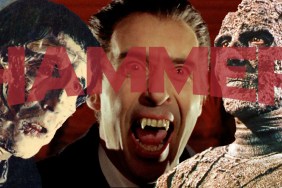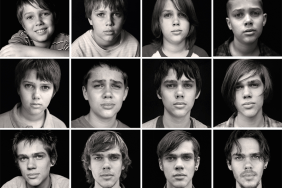
SHOCK riffs on the horrors of early ‘Hays Code’ Hollywood and examines their effect on contemporary films.
I wish to join the Legion of Decency, which condemns vile and unwholesome moving pictures. I unite with all who protest against them as a grave menace to youth, to home life, to country and to religion. I condemn absolutely those salacious motion pictures which, with other degrading agencies, are corrupting public morals and promoting a sex mania in our land
Considering these evils, I hereby promise to remain away from all motion pictures except those which do not offend decency and Christian morality.
Catholic Legion of Decency pledge
Pre-Code cinema is a term used to refer to films made after 1930 and before 1934 when the infamous Motion Picture Production Code or Hays Code (named after Will H. Hays then-president of the Motion Picture Producers and Distributors of America) was implemented. The Code was a set of puritanical moral guidelines used to dictate the values which Hollywood and its films were meant to extol. The government was realizing that despite their initial beliefs, films (which at that point were just beginning to use sound) were here to stay and were becoming the predominant form of social entertainment. Films delighted, scared and intrigued their audiences and the government wanted to ensure that the correct morals and beliefs were being shown on screen. The Code was drafted in 1930 but not enforced until 1934 the four year period in-between offered up bevvy of scandalous and sensational films everything from graphic horror films to bloody gangster films to pseudo-feminist women led films. These pre-Code films, as they became known, were emblematic of the social decay and unhealthy attitudes which were exactly what the government feared. These four years which constitute the pre-Code era were a time when studios pushed the limits, testing what would be acceptable and what would get axed. Depictions of violence, trauma, and sexuality were rampant during this time and horror films were no exception. Some of the most bizarre, gruesome and nihilistic horror films were made in this time in the face of the on-coming conservatism which was about the hit the film industry.
The ‘Pre-Code’ era began almost in tandem with the Great Depression in the United States. Movies became popular entertainment because of their ability to provide escapism for audiences who were facing desperate times. Horror films in particular played up elements of the fantastic to help cut through the darkness of the stories of the films allowing the audience to engage with something shocking and more terrifying than everyday life. German Expressionism which had first made an impact on the horror genre with Robert Wienes THE CABINET OF DR. CALIGARI (1919) was in part brought to America by Carl Laemmle a native German who swiftly rose through the ranks of Universal Studios who was instrumental in establishing the Universal Monsters. These films not only focused on the heightened atmosphere of monsters mainly from literature such as DRACULA (1931) and FRANKENSTEIN (1931) but making stars out of their monsters (Lugosi, Karloff) creating a proven track record that audiences continued to pay to see.

Universal, however, was not the only studio to get in on the horror game. MGM would make the iconic pre-Code horror film Tod Brownings FREAKS (1932) which was banned in certain parts of America due to the content of the film and because the film featured people who performed in sideshows rather than loading prosthetics on actors. Paramount found tawdry success with Rouben Mamoulians DR. JECKYL AND MR. HYDE (1931) which dealt with taboo sexuality and the studio proceeded to produce a string of iconic pre-Code horror films such as ISLAND OF LOST SOULS (1932) and MURDERS AT THE ZOO (1933). These films were notable, in part, because of their political incorrectness and because they conflated man with animal – the idea that society had been bred into us and was inherently unnatural. In fact, much of what the Hays Code would attempt to do is breed the ideal society. Pre-code films rejected those notions in an attempt to showcase the reality of fear. Pre-Code horror films showcased violence, prejudice, rape and a multitude of other taboos. The Hays Code was replaced by the MPAA rating system in 1968 after the Code became untenable to enforce with the increasing amount of films being produced every year.
The lasting influence of the pre-Code horror films can be seen in American horror when the country was in crisis. In the early 1970s when America was careening towards the end of the Vietnam War and was attempting to comprehend the violence of the Charles Manson murders and the instability of the government exemplified by Richard Nixon, horror films reacted by creating dizzying, morbid visions of the American Dream gone terribly wrong with films such as THE LAST HOUSE ON THE LEFT (1972), THE TEXAS CHAINSAW MASSACRE (1974) and HALLOWEEN (1978) among others. A similar trend would emerge in America and internationally in the wake of the September 11th attacks with the so-called Torture Porn trend with films such as HOSTEL (2005) and A SERBIAN FILM (2010) as well as the films of New French Extremity like IRREVERSIBLE (2002), HIGH TENSION (2003), and MARTYRS (2008).

Pre-Code films were an anticipatory reaction to the moralizing that films faced for decades following the 1934 implementation. While some films made during the Hays Code period such as Jacques Tourneurs CAT PEOPLE (1942) offered a restrained subversion of those morals, pre-Code horror films are still shocking to this day. They depict anger and dissatisfaction with life which was more relevant to audiences than the beatific sanitization of the American Dream. The morals preached through the Hays Code were never attainable. They were idealized dreams of what the government wanted their citizens to be, pre-Code films depicted and offered a blueprint for the, occasionally, terrifying reality that Americans faced.









